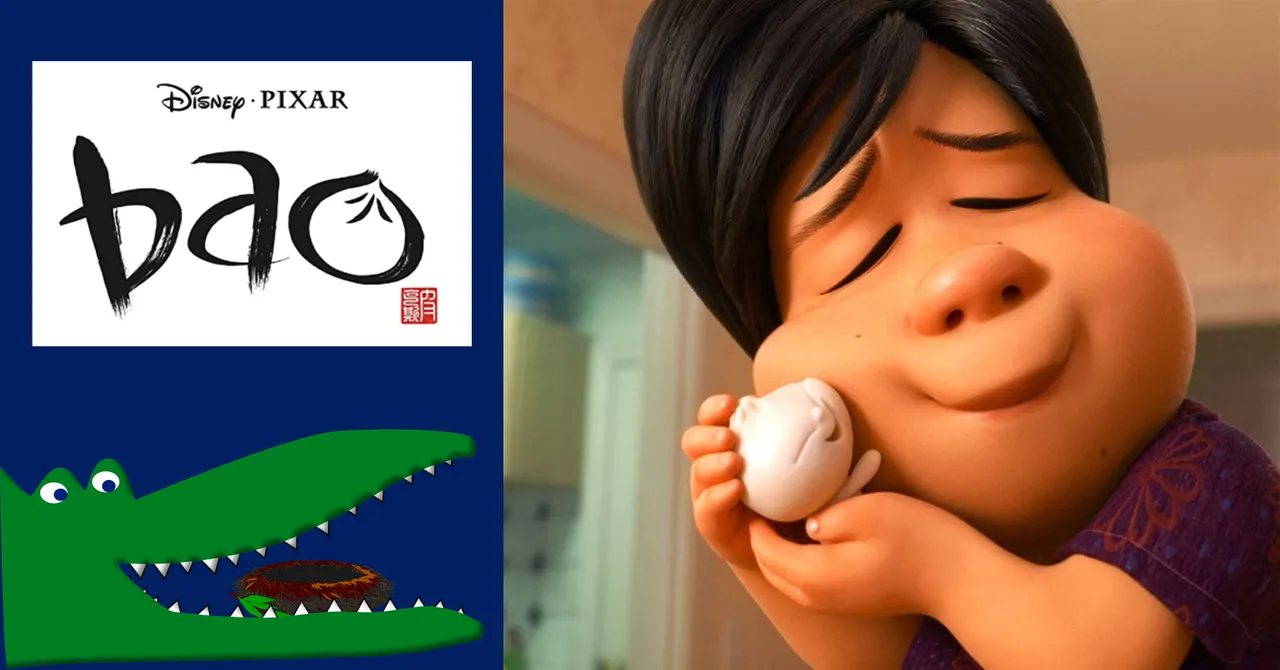
¡Hola a todos! Hoy les traigo una reseña psicológica de un aclamado cortometraje de Pixar, llamado BAO. En el año 2018 Pixar sorprendió al mundo con este corto, el cual generó un gran impacto en la audiencia.
Algunos lo comprendieron, lloraron o se conmovieron, mientras que otros se rascaban la cabeza o salían horrorizados.
Hi all! Today I bring to you a psychological review of an acclaimed Pixar short film called BAO. In 2018 Pixar surprised the world with this short film, which generated a great impact on the audience.
Some understood it, cried, or were moved, while others scratched their heads or left the room horrified.

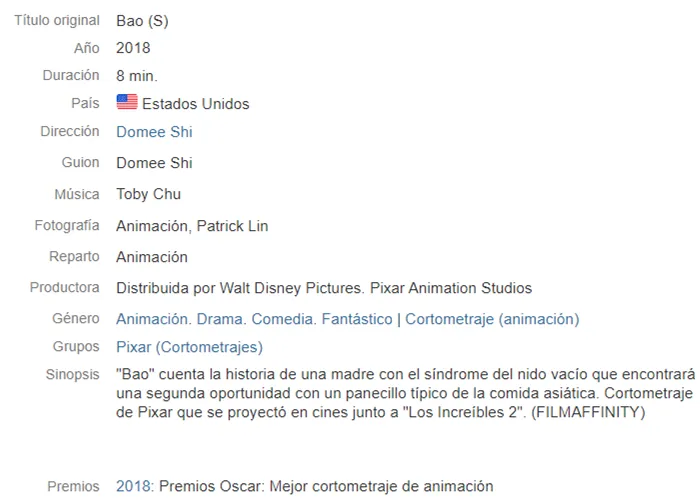
Domee Shi, la directora del corto, explicó que la premisa del filme es retratar el síndrome del nido vacío. La intención era colocar el foco de atención sobre un tema del que no se suele hablar, porque no es culturalmente aceptable estar triste si tus hijos salen a vivir su vida, si están sanos, si son felices; especialmente en la cultura asiática, la cual enmarca la historia.
Desde esa intención manifiesta el objetivo del filme se alcanza sobresalientemente, sin embargo, hay mucho más contenido latente desde el punto de vista psicológico que ha sido representado en este cortometraje.
Domee Shi, director of the short film, explained that its premise is to portray the empty nest syndrome. The intention was to place the focus of attention on a subject that is not usually talked about, because it is not culturally acceptable to be sad if your children move out to live their lives, if they are healthy, if they are happy; especially in Asian culture, where the story takes place.
From that intention, the objective of the film is excellently achieved, however, there is much more latent content from the psychological point of view that has been represented in this short film.

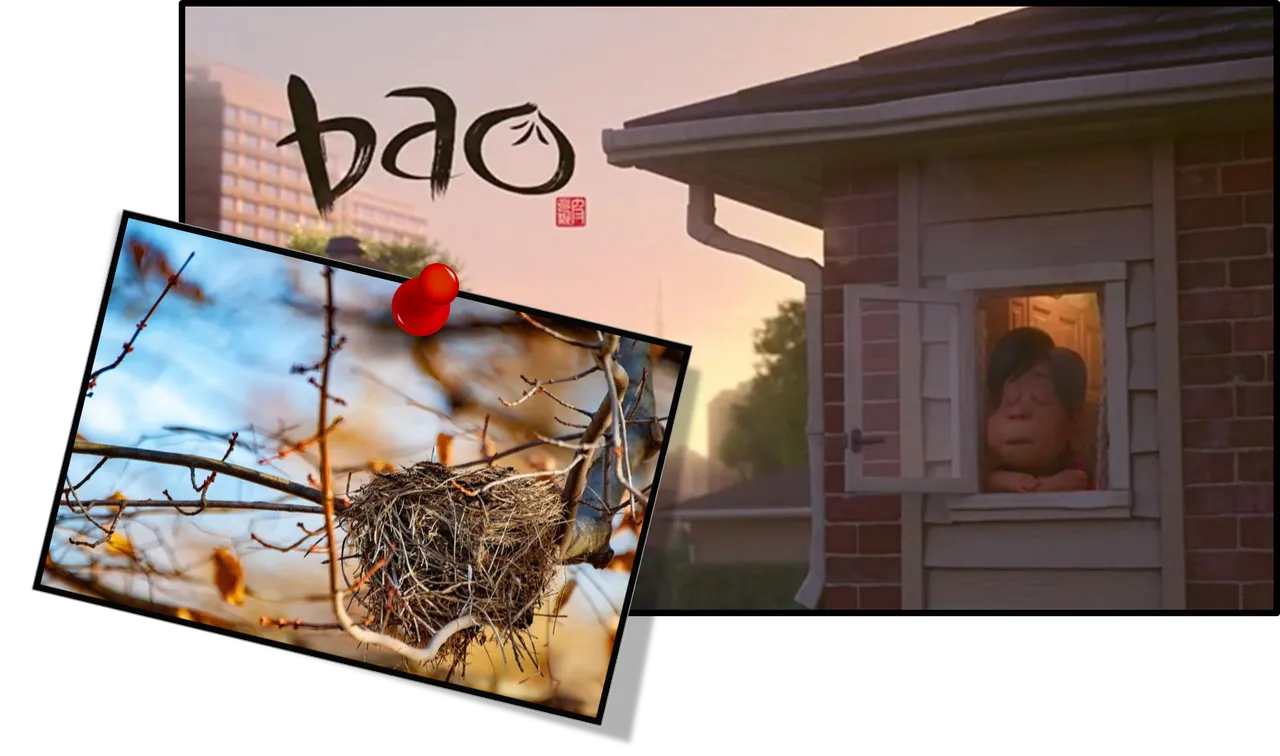
Lo primero que hay que dejar claro es que el síndrome del nido vacío no es un trastorno, no es una psicopatología. Lo que si define a este síndrome es el duelo. Mayo Clinic lo precisa de la siguiente manera: “es un fenómeno en virtud del cual los padres tienen sentimientos de tristeza y pérdida cuando el último hijo se va de casa”.
En ocasiones se trata del único hijo, como se aprecia en BAO. La vivencia de este duelo en la madre del pequeño Bao la llevan a experimentar una gran ansiedad y temor por la seguridad de su hijo en el mundo exterior, además del vacío que la partida de este representa en su rutina cuando toda su atención se centraba únicamente en su rol de madre.
El síndrome del nido vacío como todo duelo requiere de tiempo y acompañamiento. Buscar apoyo en la pareja, familiares y amigos, incluso redescubrir pasiones e intereses que se habían dejado de lado en el ámbito personal y profesional, pueden ayudar a los padres a sobrellevar el sentimiento de pérdida. Sin embargo, en BAO se nos muestra que la madre no logra expresar su tristeza a su pareja. Tampoco se observa la redirección de su tiempo y energía a otros intereses, lo cual permite la introducción en el filme de la metáfora de la boca de cocodrilo de Jacques Lacan.
First of all the empty nest syndrome is not a disorder, it isn’t a psychopathology. What does define this syndrome is grief. Mayo Clinic specifies it in the following way: "It is a phenomenon in which parents have feelings of sadness and loss when the last child leaves home."
Sometimes there is one only child, as seen in BAO. The experience of this mourning from the mother of little Bao led her to experience a great anxiety and fear for the safety of her son in the outside world, in addition to the emptiness that his departure represents in his routine when all his attention was focused solely in her role as a mother.
Empty nest syndrome, like all grief, requires time and support. Seeking support from partners, family and friends, even rediscovering passions and interests that had been neglected on a personal and professional level, can help parents cope with feelings of loss. However, at BAO we are shown that the mother is unable to express her sadness to her partner. The redirection of their time and energy to other interests is also not observed, which allows the introduction in the film of Jacques Lacan’s metaphor of the crocodile mouth.

Resulta impresionante como los guionistas del filme lograron representar esta metáfora de Lacan de forma tan magistral, cuando lo cierto es que Lacan no es precisamente un contenido de fácil digestión. Vamos a ello.
It is impressive how the screenwriters of the film managed to represent this metaphor from Lacan in such a masterful way, when the truth is that Lacan is not exactly an easily digestible content to read and understand. Let’s go for it.
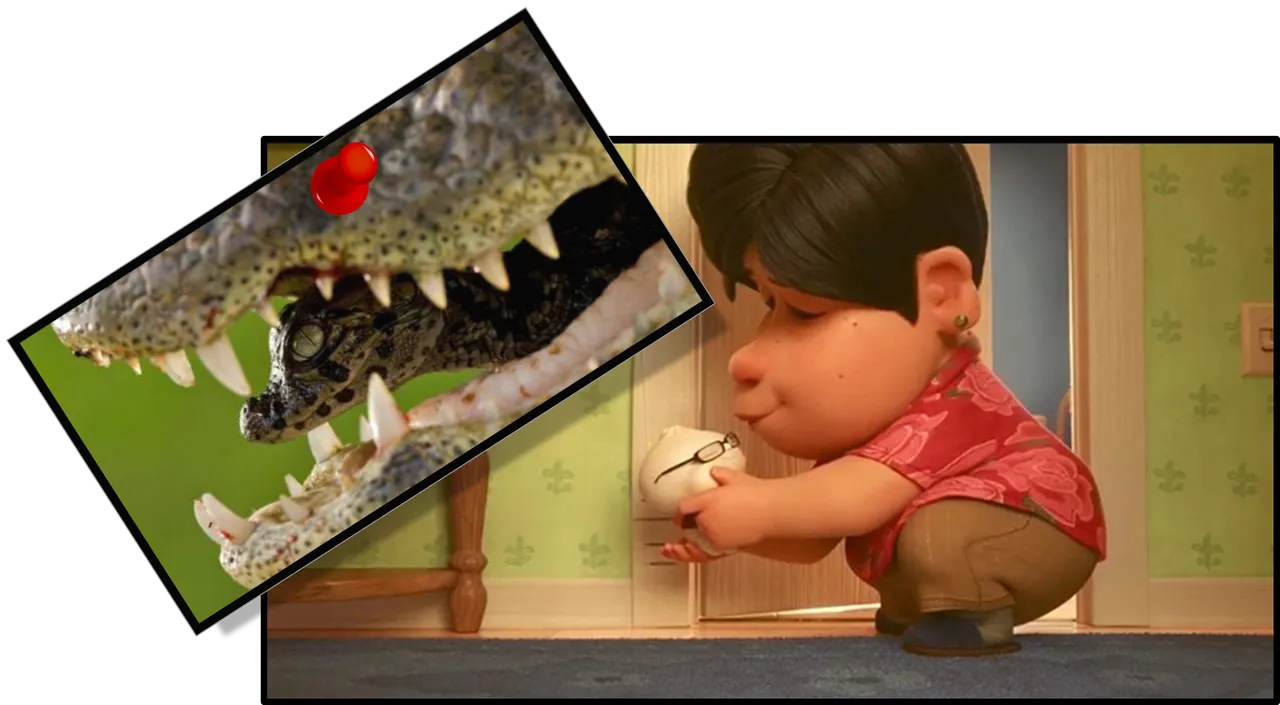
BAO nos sumerge de cabeza en la experiencia emocional del vínculo madre-hijo desde la perspectiva de esa madre procuradora de cuidados y afectos. A medida que su pequeña creación va creciendo, la madre siente desesperación y preocupación. Ahí el síndrome del nido vacío se está presentando y Bao ya se encuentra en la boca del cocodrilo.
Las madres cocodrilos trasportan a sus crías en sus fauces sin cerrarlas. La madre de Bao es quien trasporta, alimenta y alienta a su pequeño dumpling en todo momento. Después de todo, ella creó con sus propias manos a ese bollo relleno y fue en su boca que cobró vida.
¿Qué pasaría si por algún capricho mamá cocodrilo decidiera cerrar su boca?
Para que esto no ocurra es necesario introducir un palo de piedra en la boca que funcione como traba, y este palo de piedra es lo que Lacan utiliza para hacer referencia a la figura paterna.
Hay que tener claro que para Lacan la función de la figura paterna juega un papel fundamental en el desarrollo de la estructura psíquica del niño.
Es necesario que esta figura del padre esté presente para poder separar sanamente a la madre del niño y evitar que ésta sucumba ante el deseo de reintegrar su creación.
En otras palabras, el padre es quien recuerda en esta dinámica que madre e hijo son individuos separados, es quién marca el límite y recuerda la división de roles: la madre no es única y exclusivamente madre, también es mujer.
¿Y dónde está papá en BAO? Mientras vemos a Bao crecer en la pantalla, la figura paterna no aparece por ningún lado. Si no hay una figura paterna que cumpla adecuadamente su función, el niño queda atrapado en las fauces de su madre.
En el punto clímax del filme, la madre no soporta más el dolor de verse obligada a soltar a su hijo, a su pequeña creación y ¿qué hace?
Se lo come. La boca del cocodrilo, en ausencia del palo de piedra, cede a su deseo materno y se traga a su creación, reintegrándolo para que se quede por siempre con ella, a salvo, unidos.
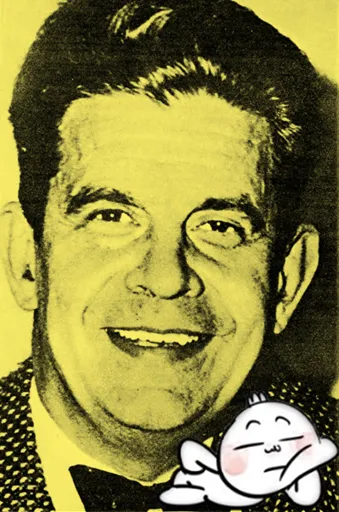
BAO plunges us headlong into the emotional experience of the mother-child bond from the perspective of that mother, caregiver and affectionate. As her little creation grows, the mother feels despair and concern. There the empty nest syndrome is occurring and Bao is already in the crocodile mouth.
Crocodile mothers transport their young inside their jaws without closing them. Bao's mother is the one who carries, feeds and encourages her little dumpling at all times. After all, she created that stuffed bun with her own hands and it came to life in her mouth.
What if, for some whim, the crocodile mother decided to shut her mouth?
For this not to happen it is necessary to introduce a stone stick in the mouth that works as a lock, and this stone stick is what Lacan uses to refer to the father figure.
It must be clear that for Lacan the function of the father figure plays a fundamental role in the development of the child's psychic structure.
It is necessary that this figure of the father is present to be able to healthy separate the mother from the child and to prevent her from succumbing to the desire to reintegrate her creation.
In other words, the father is the one who remembers in this dynamic that mother and son are separate individuals, it is he who sets the limit and remembers the division of roles: the mother isn't only and exclusively mother, she is also a woman.
And where's dad in BAO? As we watch Bao grow on the screen, the father figure is nowhere to be seen. If there is no father figure that adequately fulfills its function, the child is trapped in the jaws of its mother.
At the climax of the film, the mother can no longer bear the pain of being forced to release her child, her little creation, and what does she do?
She eats him. The crocodile mouth, in the absence of the stone stick, yields to its maternal desire and swallows its creation, reintegrating it so that it stays with it forever, safe, united.

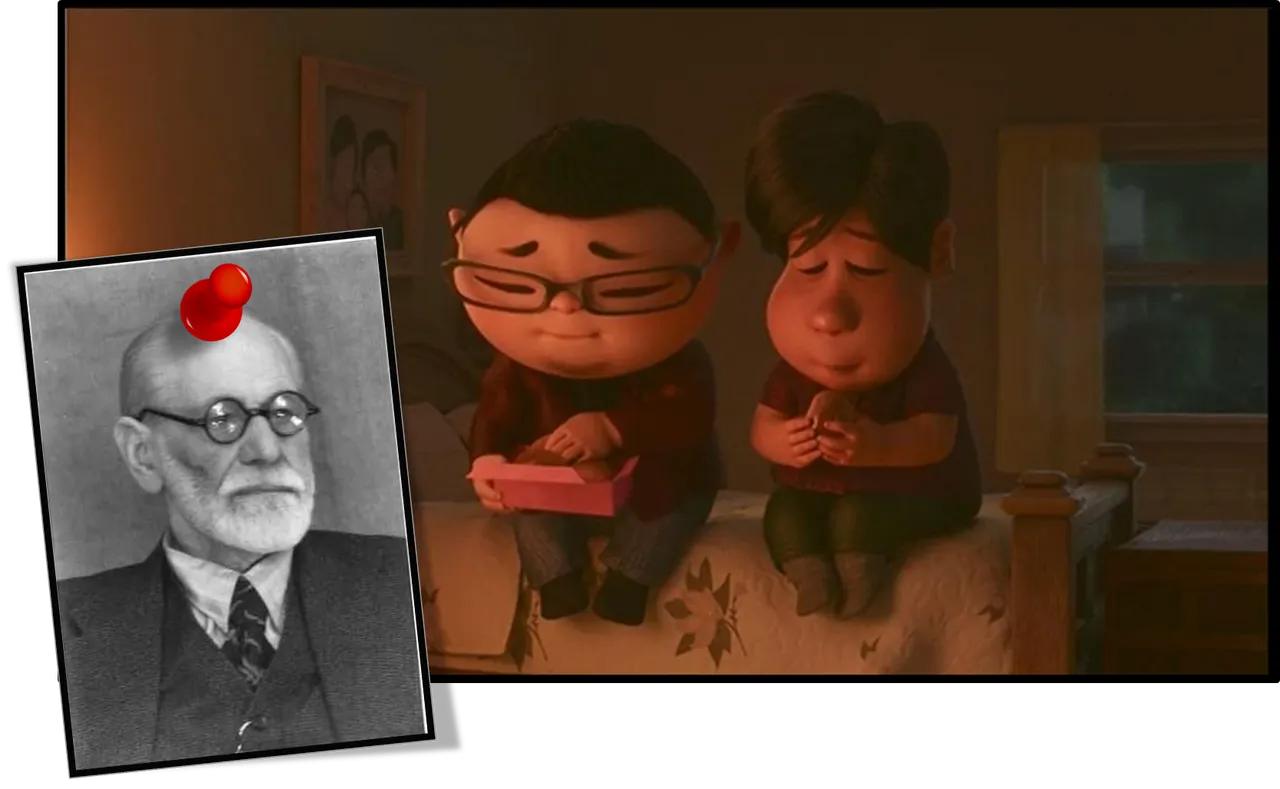
editadas por mi en Power Point 2016 | edited by me in Power Point 2016
Se trata de un cortometraje de Pixar, así que no. Pero la forma en que esta cuestión se resuelve también tiene su trasfondo psicológico. Luego de comerse a su creación, la imagen se difumina y nos muestra a la madre como despertando de un sueño, angustiada, llorando la pérdida de su hijo mientras su esposo observa la imagen desde la puerta de la habitación.
En primer lugar, que todo fuera un sueño es una clara referencia a la teoría de elaboración onírica de Sigmund Freud, en la cual este autor expresa que todo sueño es el cumplimiento de un deseo reprimido en el inconsciente, en este caso, el deseo de la madre de reiniciar todo, de ser uno con su hijo, de no perderlo.
Asimismo, Freud plantea que los sueños se forman a partir de pensamientos residuales de nuestro día a día (restos diurnos) y que en la elaboración onírica se fusionan con varios contenidos inconscientes en una sola imagen (mecanismo de condensación); en este caso, el sueño representa al hijo en forma de dumpling, quizás porque la cabeza de su hijo se parecía a la forma del dumpling.
En segundo lugar, al despertar del sueño a la realidad aparece la figura paterna, el esposo, y es su presencia la que propicia el final conmovedor del filme. Da espacio para el duelo, acompaña desde su rol y media de forma sana entre madre e hijo.
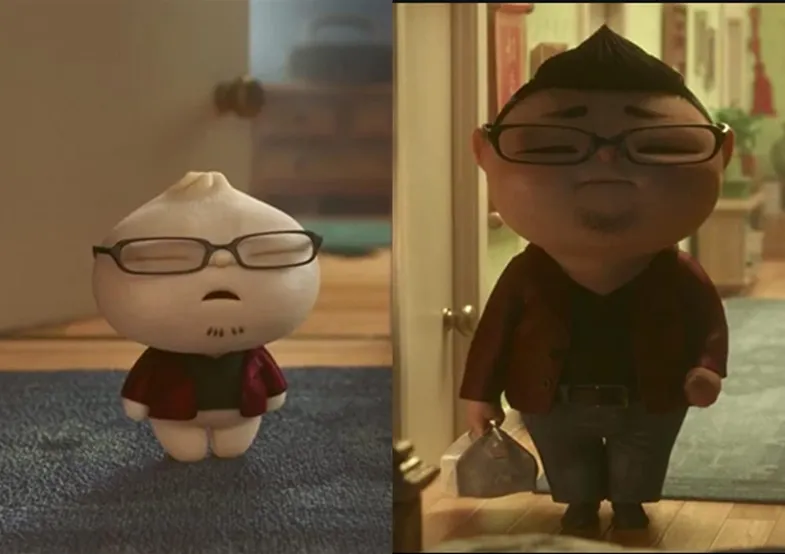
Of course not. This is a Pixar short film, But the way this issue is resolved also has its psychological background. After eating her creation, the image fades away and shows the mother like waking up from a dream, anguished, crying the loss of her son while her husband watches the image from the door of the room.
In the first place, that everything was a dream is a clear reference to Sigmund Freud's dream elaboration theory, in which this author expresses that every dream is the fulfillment of a repressed desire in the unconscious, in this case, the desire to the mother to restart everything, to be one with her son, not to lose him.
Likewise, Freud argues that dreams are formed from residual thoughts of our day-to-day life (diurnal remains) and that in the dream-making they merge with various unconscious contents into a single image (condensation mechanism); In this case, the dream represents the son in the form of a dumpling, perhaps because his son's head resembled the shape of the dumpling.
Second, upon awakening from sleep to reality, the father figure, the husband, appears, and it is his presence that fosters the moving ending of the film. It gives space for mourning, it accompanies from its role and mediates in a healthy way between mother and son.

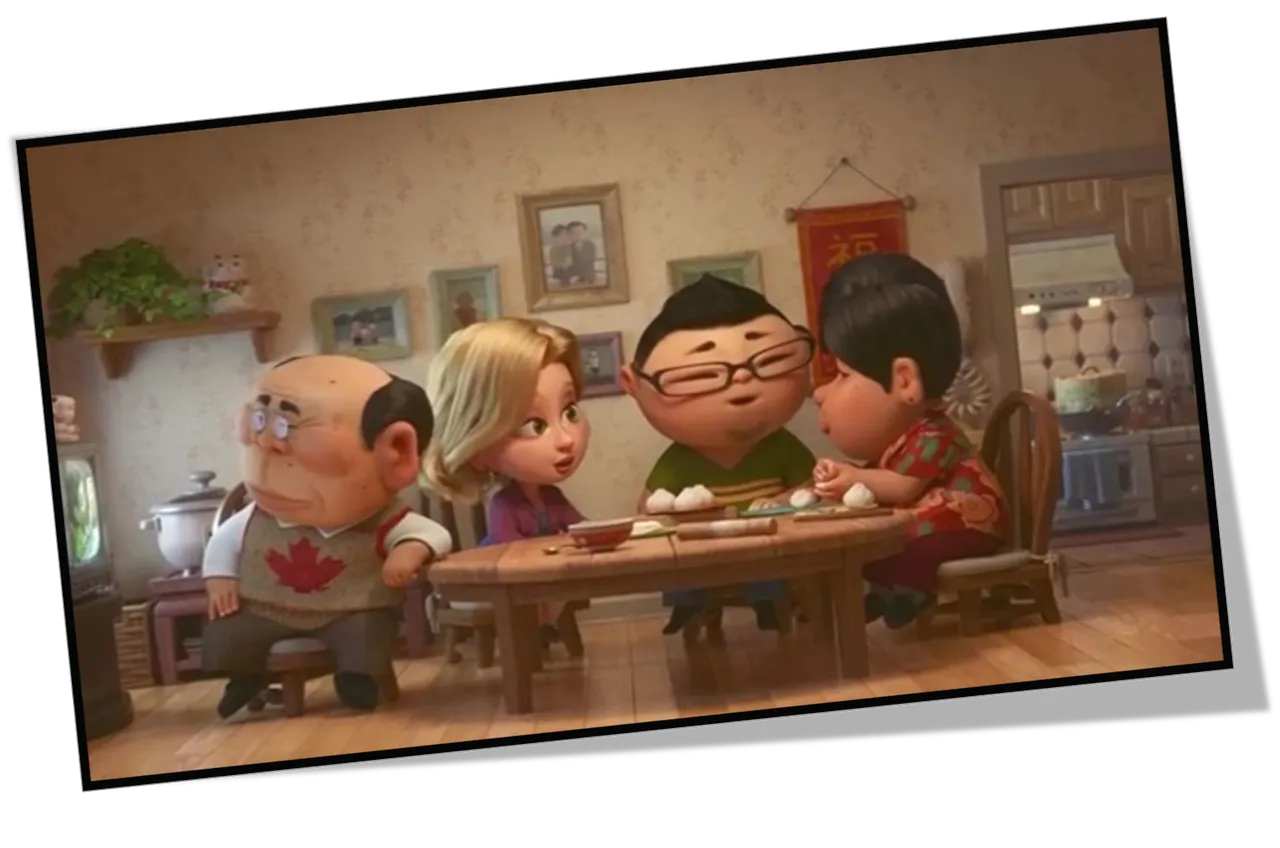
Sí y no. El deseo maternal de cuidar y procurar a los hijos es una de las cosas más poderosas que existen en el mundo, puede ser destructivo y devorador, pero no deja de ser una fuente sin igual de amor, apoyo y herramientas que preparan al niño para afrontar su independencia.
La madre en BAO no es un ser esencialmente malo y terrorífico, al contrario, es la representación del afecto, la atención y el cuidado que logra hacer sentir al hijo listo para iniciar su propio camino. Lo que no hay que olvidar es que, como todo en la vida, los extremos son malos.
Parte esencial de la maternidad es soltar a los hijos para que vivan su vida. La clave para no cerrar las fauces y dejarlos salir al mundo, es recordar que la función materna no es la única función que tiene la vida de una mujer. Ser madre no es el único rol, se es pareja, hija, hermana, amiga, profesional, mujer.
Yes and no. Maternal desire to care and provide for children is one of the most powerful things in the world, it can be destructive and devouring, but it is still an unequaled source of love, support and tools that prepare the child to face Their independence.
The mother in BAO is not an essentially evil and terrifying being, on the contrary, she is the representation of the affection, attention and care that manages to make the child feel ready to start his own path. What should not be forgotten is that, like everything in life, edges are bad.
An essential part of motherhood is releasing children to live their lives. The key to not closing the jaws and letting them out into the world is to remember that the maternal function is not the only function in the life of a woman. Being a mother isn't the only role, a woman also is part of a couple, she is daughter, a sister, a friend, a professional worker, a woman.


Otras Fuentes | Other Sources:
El deseo de la madre: insaciable, devorador y estragante por | by Hernando Bernal
El estrago materno por | by Jorge Martija
Jacques Lacan en | in Wikipedia
Sigmund Freud en | in Wikipedia